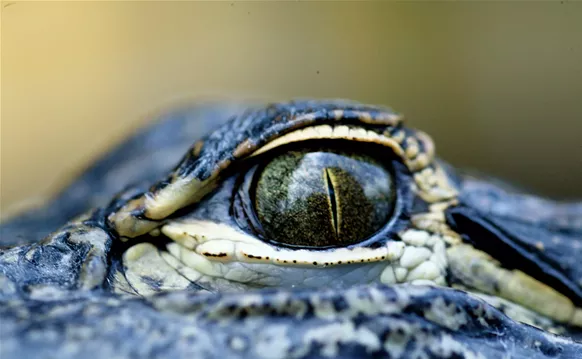You know the building: a big, windowless, white box on Federal Highway in Dania Beach, with a huge Tyrannosaurus Rex skeleton mounted alongside the western wall. "The Gallery of Amazing Things," the sign declares. Surely, you've wondered: What's so amazing in there?
The site had been home to the Graves Museum of Archaeology and Natural History from 1993 until that closed in 2004, hence the T. Rex. The building sat empty until December 2011, when Arron Rimpley and his business partner, Gregg Whittecar, bought the building and began restoring it.
Rimpley, who is from Colorado, arrived in Miami in 1993. He couch-surfed for a while before eventually landing a job in the art business working for Pasco, a company that specialized in ceramics. There he met Whittecar, who had worked retail at Macy's before being offered a job selling porcelain. After the two got a feel for the market — there's a decent one, they say — they struck out on their own as business partners in 1999, traveling the world dealing ceramics at international antiques fairs and later through catalogs and online.
"They're great conversation pieces."
tweet this
In 2003, they wrote a book about fine decorative porcelain, Royal Doulton: a Legacy of Excellence 1871-1945 (available on Amazon for $95). Soon, their interests expanded to other wildly unique and exquisitely well-crafted objects: prehistoric fossils, colored blown glass, antique boat motors, and binoculars.
Ultimately they needed space to display all their finds. The former Graves Museum was convenient for clients in Miami as well as Boca and Palm Beach. Restoration wasn't easy, and most of 2012 was spent renovating the vacant building, from replacing faulty wiring to getting rid of asbestos. "It was a disaster. The building hadn't had its 40-year inspection," says Rimpley. "I had to sell my car to pay for the roof." The T. Rex, however, was a cool touch, so it remained.
In April 2013, the building opened its doors, and while Rimpley worried that the 50,000 square feet of space would take years to fill, he was mistaken.
The gallery's downstairs is a versatile, open, 20,000-square-foot space that can be easily transformed for any occasion. "It has all open ceilings, raw concrete floors. It looks like a New York loft in here," says Whittecar.
So far, the businessmen have hosted clients like Tesla and Aston Martin. Wyclef performed there for a gig to promote Pandora, and this summer, Red Bull brought in a circular stage for a break-dancing competition. A comic convention also booked the space. "We do corporate events, bar mitzvahs," Rimpley says. People can incorporate some of the art from the gallery into their own project.
Also downstairs are fossils of ancient fish and ammonites — squidlike creatures that went extinct with the dinosaurs. According to Whittecar, the pieces are sourced from a quarry in Wyoming, where only a limited number of slabs of granite or marble can be removed. "An artist chips away at the stone to expose the fossil underneath," he explains. Some of these works can be seen on the website eostone.com.
But the second floor is where things really get amazing. This area, called the Weiner Museum of Decorative Arts, holds a magnificent glass collection from Dale Chihuly worth almost a million dollars. Ceramics made for the Sultan of Brunei are also on display. During the recession, Whittecar and Rimpley scooped up pieces from European museums at bargain prices.
Pointing at a half-dozen statues, Rimpley says, "This is really the tip of the iceberg. I only put enough out because I don't want people to be overwhelmed." (At this, he failed.)
The museum is nothing less than outstanding. In one direction, a grand painting of a modest woman from the German romantic period. A couple of feet down, contemporary renditions of Victorian-era dresses by students from the Fort Lauderdale Institute of Art..
The museum also has an extremely rare collection of ceramic pieces from the 1920s that have been glazed with lead — a technique called flambe — which cannot be done now due to restrictions on lead usage.
But it's the craftsmanship of some of the antiques that stands out. "We have a tremendous collection of aviation artifacts — parts that were in old James Bond movies," says Whittecar. "Some of them have been turned into chairs and benches. There are airplane blades that function as pieces of sculpture." About 20 pairs of restored World War II-era naval binoculars are on display, as are vintage outboard boat motors. "These are Evinrude motors made in the 1940s and '50s," Whittecar says, "beautifully restored. They look like sculpture."
The market for these unique pieces is robust, Whittecar claims. "It's art; it's home decor. People in the collectibles market decorate homes or offices with this — it's sculptural art, and they're great conversation pieces." Everything on offer is in working condition.
But be warned: "We're not like a gift shop," he says. The cheapest items are porcelain votives or room diffusers that go for under $100. Some small tiles in the fossil gallery are likewise close to the $100 mark. But crystals range "from $500 up to tens of thousands of dollars," and fossil murals start at $4,000 or $5,000 and go "up to $200,000 and beyond."
Still, you're invited to have a look-see. The gallery is open to the public Monday through Friday from 10 a.m. to 5 p.m. and by appointment on weekends. Some events are also open, like a salsa contest coming in October, an international ceramic and glass fair in January.
Next up: Thursday, September 24, the space is celebrating the 200th anniversary of those gorgeous Royal Doulton ceramics with an all-day tea party called From Tea to Table. A sixth-generation Doulton will be a featured guest; experts will lecture about antique teacups and etiquette; and there will be tea tasting (plus tea cocktails!) courtesy of Tracy Stern Tea & Co., purveyor of fancy, delicious teas.
Come in and see, says Whittecar. To make the grade for inclusion, he says, any artifact "has to be beautiful, be historically significant, and it has to be real."








